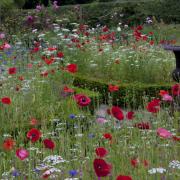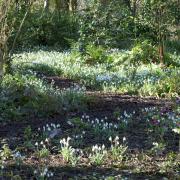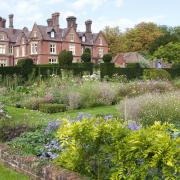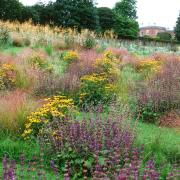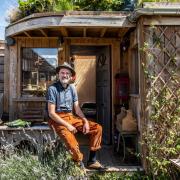Kent Gardens Trust is celebrating the tercentenary of Lancelot ‘Capability’ Brown’s birth with a new book about his work in Kent
Lancelot ‘Capability’ Brown, the most famous landscape designer of his day, was born in 1716, 300 years ago. Employed by the most powerful, glamorous and influential people of the age, he was at the forefront of the English Landscape movement when the fashion for formal designs like the great gardens at Versailles gave way to more natural and picturesque landscapes.
Instead of formal parterres and avenues, Brown designed idyllic landscapes with broad sweeps of grass and clumps of trees placed to frame views. He was a master of creating the effect of shimmering water in the middle distance by damming streams to create sinuous lakes.
Brown worked on five sites in Kent between 1771 and 1782. Leeds Abbey, near Leeds Castle, was bought by John Calcraft, who had made an vast fortune as a government agent supplying the army in 1765. The house was on the site of a 14th-century priory with formal gardens around it. Calcraft employed Brown to redesign the gardens and paid him the enormous sum of £1,800 (£200,000 in today’s money). Brown replaced the formal gardens with open parkland and dammed a stream to create a lake.
John Calcraft died aged only 44 in 1772 and in less than 20 years the house was abandoned and the site has remained derelict ever since.
In 1777 the owner of Chilham Castle, Thomas Heron, asked Brown to advise on improving the grounds. Remarkably, letters from Heron to his brother have survived and provide a fascinating insight into Brown’s proposals for the gardens at Chilham, and how he dealt with his clients.
The park had been laid out in a naturalistic style before Brown was consulted and he did not suggest any changes. Even the ancient chestnut avenue was retained. The Castle stands high above the river Stour and the steep slope had been carved into terraces in the 17th century.
Brown enhanced the dramatic views of the Castle by removing the top terrace and the formal gardens around the house.
Calcraft also bought Ingress near Greenhithe, which had a spectacular position overlooking the Thames, and asked Brown to work on the park. He removed formal avenues and created a graceful, elegant landscape with views down to the river; a nearby quarry was screened by artful tree planting. Sadly, Brown’s landscape disappeared in the 20th century when the land was used for paper mills; later the Merchant Navy College was built there. Now most of the area is covered by housing and just a few remnants of Brown’s landscape can still be seen.
North Cray Place is now part of Greater London but in the 18th century it was in Kent. Thomas Coventry, a wealthy lawyer and MP for Bridport, inherited the estate in 1778 and instructed Brown to make improvements to the grounds. Brown’s accounts show that he charged Coventry £1,300 for his work (roughly £150,000 today). These substantial fees suggest extensive changes were made to the grounds, including the creation of a lake by damming the river Cray, complete with a bridge and two islands.
Valence near Westerham is now a golf course, a school and private housing, but in 1771 (when it was known as Hill Park) it was an important country estate owned by influential politician the Earl of Hillsborough. Commissioned to make improvements in 1772, Brown had a formal avenue removed, replaced dense woodland with open parkland and created a serpentine lake.
A model dairy that may have been designed by Brown was also built in classical style.
Event in Kent
21 August Chilham Castle open day organised by Kent Gardens Trust, by kind permission of Stuart and Tessa Wheeler. Lectures and an exhibition.
Steffie Shield’s talk will be ‘Moving heaven and earth – Capability Brown’s gift of landscape.’ Kate Felus will talk on ‘Experiencing Brown: putting his landscapes into social context’ while a walk around the beautiful grounds of Chilham Castle will allow guests to enjoy the landscape and views.
To book please visit www.kentgardenstrust.org.uk/eventsCost: £45
Location: Chilham Castle, Chilham CT4 8DB
Opening times: 10:30 am - 4:00 pm
Accessibility Details: Parking at the Castle adjacent to the venue. Lunch is at Chilham village hall, a short walk away where alternative parking is also available
Tickets include coffee and lunch.
FIND OUT MORE
Kent Gardens Trust has published a book describing Lancelot ‘Capability’ Brown’s Kent commissions, available for £9.50 from bookshops or the website.
w








